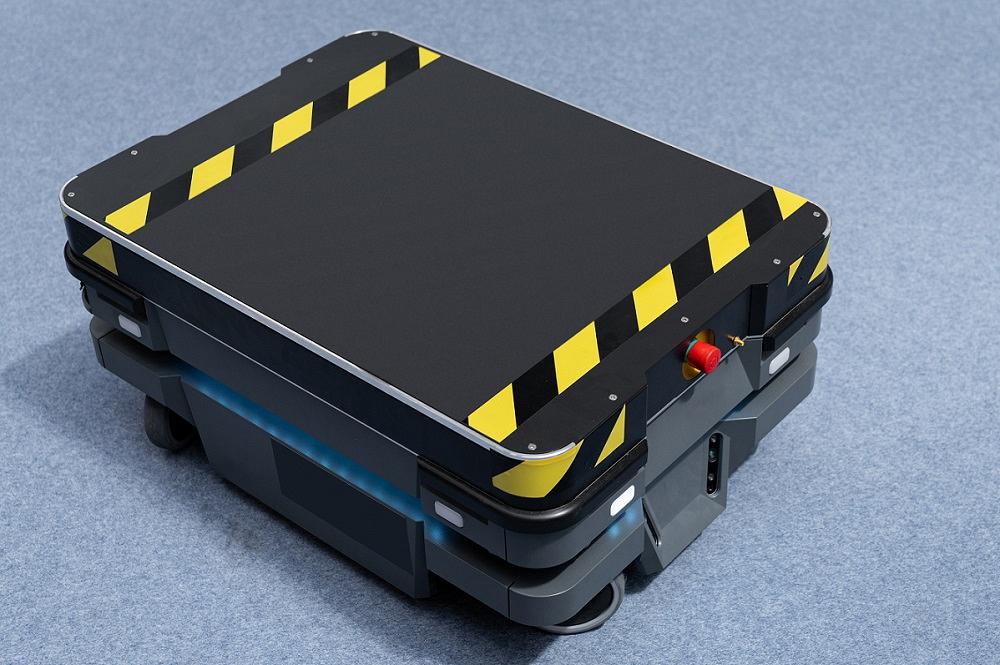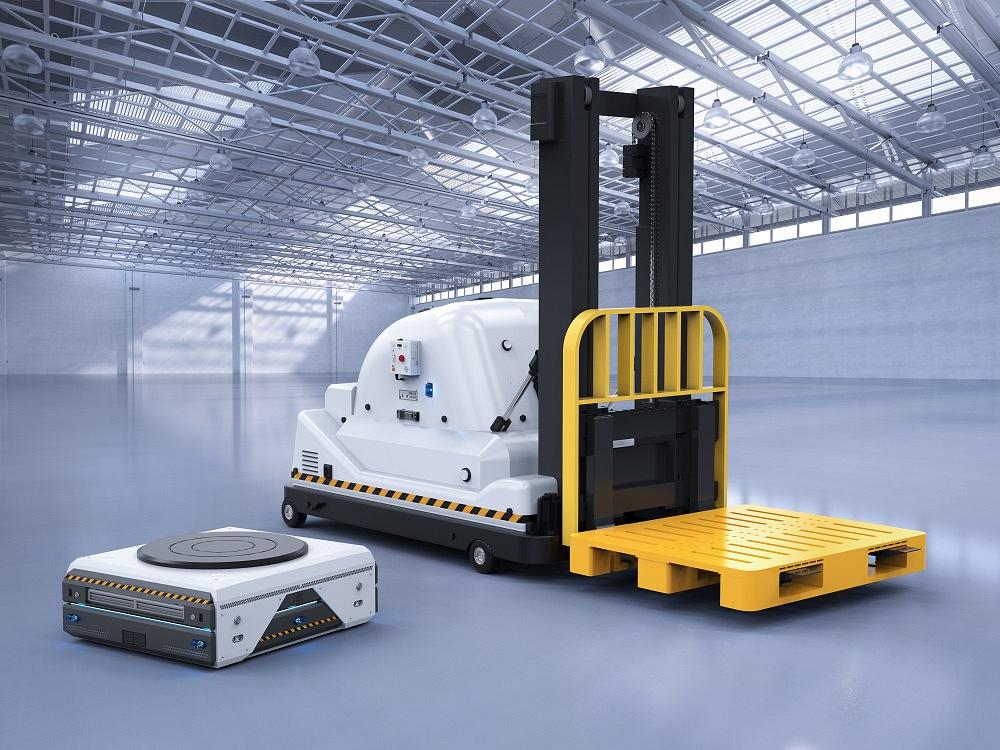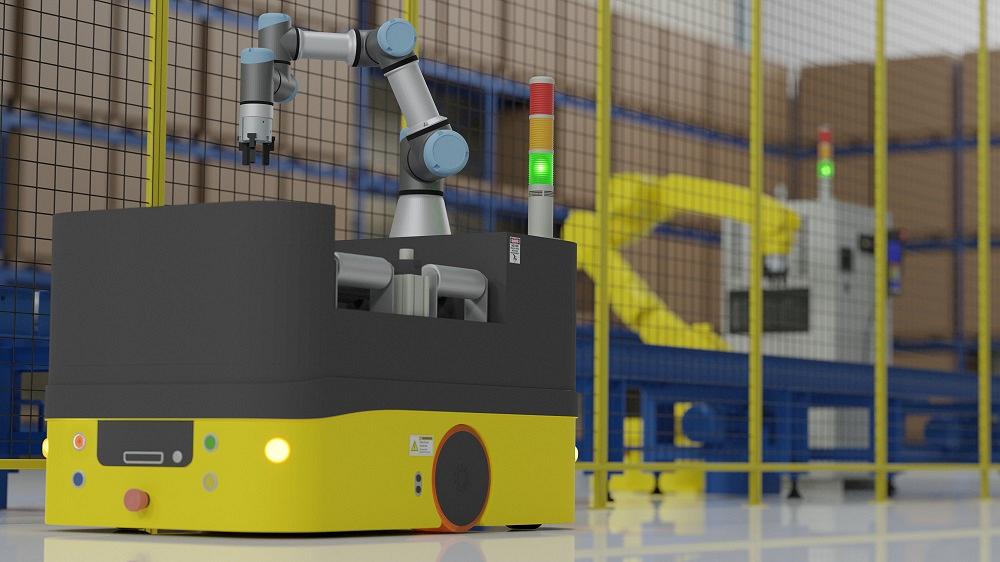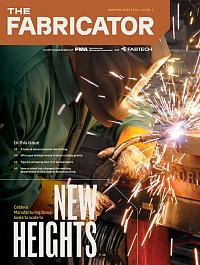- FMA
- The Fabricator
- FABTECH
- Canadian Metalworking
Categories
- Additive Manufacturing
- Aluminum Welding
- Arc Welding
- Assembly and Joining
- Automation and Robotics
- Bending and Forming
- Consumables
- Cutting and Weld Prep
- Electric Vehicles
- En Español
- Finishing
- Hydroforming
- Laser Cutting
- Laser Welding
- Machining
- Manufacturing Software
- Materials Handling
- Metals/Materials
- Oxyfuel Cutting
- Plasma Cutting
- Power Tools
- Punching and Other Holemaking
- Roll Forming
- Safety
- Sawing
- Shearing
- Shop Management
- Testing and Measuring
- Tube and Pipe Fabrication
- Tube and Pipe Production
- Waterjet Cutting
Industry Directory
Webcasts
Podcasts
FAB 40
Advertise
Subscribe
Account Login
Search
A beginner’s guide to autonomous mobile robots
Understanding automated material movement is the first step in eliminating a costly non-value-added activity
- January 23, 2024
- Article
- Materials Handling

An autonomous mobile robot (AMR) looks humble enough, but it holds the potential to eliminate the labor expense and drudgery associated with moving material and parts around a shop floor. Scharfsinn86/iStock/Getty Images Plus
Editor’s Note: This article is based on the presentation, “Getting Started With Mobile Robots,” by Robert Bollinger, Dynamic Horizons Automation Solutions, at The Automate Conference, May 22, 2023, in Detroit.
Finding workers in any industry today is a challenge. With that in mind, manufacturing companies have to make the most of the workers they employ.
In many facilities, highly skilled workers find themselves moving material or products from one manufacturing process to another or moving parts to a quality lab for inspection. These manufacturing companies need to realize an important truth: Mobility is not a value-added activity. Autonomous mobile robots (AMRs) can handle some of these material movement chores, and the highly skilled workers can be redeployed to more vital and profitable activities.
Understanding the Terminology
AMRs, also called industrial mobile robots (IMRs) in some conversations, follow a programmed path, but use sensors and vision systems to move around obstacles in their path. People who have been in manufacturing for several years are likely familiar with automated guided vehicles. They also provide automated material movement, but these devices follow designated paths and cannot move around obstacles in their way. The fixed routes typically are defined by wires, magnetic strips, or sensors. As AMRs have become more advanced and reliable, they have emerged as an alternative to AGVs.
AMRs also continue to grow more flexible. Some newer models actually can choose preferred paths based on time and the amount of traffic on a shop floor.
ANSI/RIA R15.08 is the standard that not only covers the classifications for AMRs, but also safety as well. (The Robotics Industries Association, or RIA, is now known as the Association for Advancing Automation. ANSI is the American National Standards Institute.) The standard groups AMRs into three categories.
Type A IMRs are units that provide basic material movement between two points. The unit relies on information provided about the layout and laser-scanned data to function independently in a manufacturing environment. Some of these units can be fairly small, but they also can hold much larger loads, depending on the design. They also can perform functions like having a lift that allows the AMR to move underneath a load, have the top surface move up to lift the load, and proceed to the programmed destination.
Type B IMRs are altered to allow the unit to conduct work. A good example would be forks that allow the AMR to pick up a pallet of material and move it. The AMR is designed so that it is counterbalanced, like a forklift, but it can operate in a fully automated mode. These types of devices could be used to bring tooling from a storeroom or replenish parts in a kanban rack.
Type C IMRs are what most people envision when they think about an IMR. In this case, something like a cobot is placed on the AMR’s platform. By using the unit and the add-on setup, the vehicle can move to various locations and perform distinct functions. Probably the most common use for this IMR type is machine tending, where the vehicle moves into a position for the cobot to unload a finished part, drop it off into a tote, and then load a new blank into the same mill. Depending on the cycle time needed to create the part, the same IMR might be able to interact with more than one machine tool.
AMR Considerations
If a company has a desire to minimize operator involvement in the movement of materials or parts, AMRs obviously are very attractive. What’s should these companies keep in mind during their automation search?

In this 3D illustration, an AMR picks up an engine from a conveyor for a trip to the next step in the production process. nay/iStock/Getty Images Plus
Keep a Wide Focus. Sometimes people, as they get into new technologies, can be very myopic. They focus on one particular challenge that needs to be solved, when in reality they should be looking at the entire operation.
The initial focus might be on moving parts to a warehouse, but is that really the extent of where an AMR can make a difference? The vehicle could be used to bring parts to a quality assurance lab or somewhere else.
Also thinking holistically might influence the selection of the integrator or robot supplier that will help with the automation upgrade. For example, a company might not want to get stuck in a relationship with a vendor that only deals with small robots when there might be a need to move some heavy loads or pallets as well.
Pick the Right Partner. A lot of automation experts are available, and they all offer a unique perspective. They include automation integrators, robot manufacturers, and safety consultants. In some cases, the consultation, robots, and integration are handled by the same company. In other cases, an integrator might select the AMR and a robot manufacturer selects any attachments that might be involved. Somehow these parties will be involved in setting up an AMR. It’s now very uncommon for end users to put these whole systems together themselves.
The integrator is the key for these automation investments. They have the skill and experience to take into account not only the equipment selection, but also the ancillary concerns, such as integration into a company’s manufacturing execution system (MES) software.
It should be noted that an equipment supplier also can sometimes act as an integrator. A company should choose the integration partner that can do the work and with whom it has a good relationship.
Conduct a Risk Assessment. Because of the diversity of vehicle offerings, applications, and environments, a risk assessment absolutely is necessary for an AMR integration. A company needs to figure out what the tasks are and where these units could interact with people. Appropriate countermeasures need to be put in place in case of human interaction.
Typically, integrators take on the risk assessment during the implementation process. If an end user elected to take on the AMR deployment themselves or the integrator didn’t offer such a service, safety consultants are available to lend their expertise.
Consider the AMR’s Design Specifications. What needs to be moved? How big is the typical payload? Will the payload be stable? Where does the payload need to be delivered? Can the AMR choose its own route, or will there be preferred routes? With what interfaces might the vehicle need to interact?
A company also needs to think about chargers. What will be the most efficient way for a unit to pull over and get a charge?

This 3D illustration demonstrates how tools, such as forks, can be added to an AMR to allow it to do work. PhonlamaiPhoto/iStock/Getty Images Plus
Don’t Forget the Work Environment. Drastic changes in temperature might affect the performance of some units. Also, does the vehicle have to contend with wet areas related to cleaning of parts, for example?
Additionally, the physical layout of potential routes for AMRs needs to be explored. Ramps can pose a challenge; stairs obviously are to be avoided. How narrow are aisles? What temporary items, such as boxes, might be found in these aisles to further complicate movement? Do the vehicles have to go through doors?
The conversation about doors is important because a company doesn’t want an AMR to just stop in front of a fire door in case an alarm goes off. That’s a scenario that wouldn’t sit well with a safety manager.
Watch Out!
The AMR market is growing rapidly. Standards are evolving. There are many new automation companies entering the sector to promote their own AMR technology. With all this in mind, a manufacturer needs to maintain a healthy skepticism of what’s being told to them. They can’t afford to just accept the word of their automation integration partners because those integrators don’t fully know the business of their manufacturing partners.
For instance, only a few years ago, it was commonplace for an integrator to design an AMR plan that allowed for the addition of a couple of other vehicles in the future. That’s OK, but does such a decision really reflect the scope of the project that is required, particularly as a manufacturer looks three to five years down the road?
The integrator also needs to take into account additional traffic on the shop floor. Just how many forklifts are currently running, and how many are likely to be added in the future? At some point, a shop floor is like a California highway: Only so many vehicles can be added before gridlock occurs. A company can’t add an infinite amount of robots.
A manufacturing company looking at AMRs also needs to know that the facility’s Wi-Fi coverage is consistent. This is key because nearly all of the systems on the market use Wi-Fi to communicate directions to the AMRs.
What happens if an AMR loses Wi-Fi connectivity? Some just quit. They’ll stop and wait until they get a new connection. In other cases, the vehicles will complete the task, go to a designated destination, and wait for a Wi-Fi connection that delivers another route. The loss of Wi-Fi can really impact throughput.
This is also a good time to stress the importance of keeping the IT department continuously in the loop. With the concern over cybersecurity, IT personnel are implementing protective firewalls and being very careful about cloud connectivity. These types of decisions certainly might introduce limitations to whatever AMR system is being considered. That’s why it’s good to have the IT department and the AMR vendor or integrator work together to avoid any potential problems there.
The IT department also might be helpful in working with the AMR vendor or integrator on creating the interfaces with existing software, such as an MES. Nowadays, some vendors are putting hooks in that allow a company to connect to some of the more popular systems. In other cases, a contractor might have to be contacted to build an interface to make the connections work.
subscribe now

The Fabricator is North America's leading magazine for the metal forming and fabricating industry. The magazine delivers the news, technical articles, and case histories that enable fabricators to do their jobs more efficiently. The Fabricator has served the industry since 1970.
start your free subscription- Stay connected from anywhere

Easily access valuable industry resources now with full access to the digital edition of The Fabricator.

Easily access valuable industry resources now with full access to the digital edition of The Welder.

Easily access valuable industry resources now with full access to the digital edition of The Tube and Pipe Journal.
- Podcasting
- Podcast:
- The Fabricator Podcast
- Published:
- 04/16/2024
- Running Time:
- 63:29
In this episode of The Fabricator Podcast, Caleb Chamberlain, co-founder and CEO of OSH Cut, discusses his company’s...
- Trending Articles
Tips for creating sheet metal tubes with perforations

JM Steel triples capacity for solar energy projects at Pennsylvania facility

Are two heads better than one in fiber laser cutting?

Supporting the metal fabricating industry through FMA

Omco Solar opens second Alabama manufacturing facility

- Industry Events
16th Annual Safety Conference
- April 30 - May 1, 2024
- Elgin,
Pipe and Tube Conference
- May 21 - 22, 2024
- Omaha, NE
World-Class Roll Forming Workshop
- June 5 - 6, 2024
- Louisville, KY
Advanced Laser Application Workshop
- June 25 - 27, 2024
- Novi, MI



























